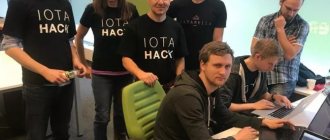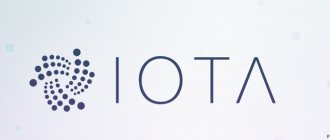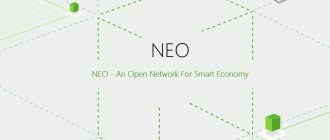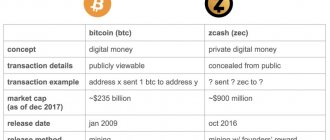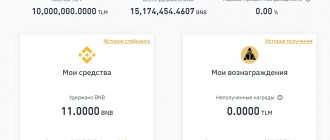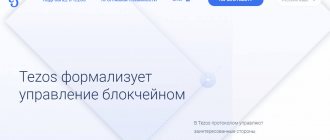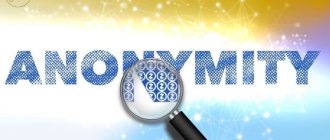IOTA was the first cryptocurrency developed for the Internet of Things and thanks to this it became popular in this area.
The Internet of Things in the future will be a network of physical devices (gadgets), cars, household appliances (for example, refrigerators, freezers, heating systems, smart devices), which can be controlled using smartphones, tablets or PCs.
In the long term, IOTA can bring to life the creation of projects such as “smart” cities, houses, and transport systems.
☝️
Interesting fact! The abbreviation MIOTA stands for “Millions of IOTA or Mega IOTA”.
A couple of years ago, almost everyone forgot about this cryptocurrency, but in 2022, against the backdrop of a general bullrun, interest in IOTA returned. In this article, we will analyze in detail what this coin is, as well as the forecast for 2022.
- What is IOTA and the history of the coin’s creation
- IOTA Team
- IOTA technology
- IOTA rate
- How to buy IOTA
- Advantages and Disadvantages of IOTA
- Interesting IOTA Foundation
- IOTA Partners
- Units
- CognIOTA - machine learning service
What is IOTA and the history of the coin’s creation
ICO project IOTA
IOTA (MIOTA)
is a cryptocurrency created by German developers. It is a coin developed on the basis of a distributed registry intended directly for use in the Internet of Things (IoT) system.
The main tasks and goals of the IOTA cryptocurrency are:
- Ensuring secure transactions between “things” (i.e. gadgets) in real time. The IOTA payment architecture was developed based on the machine-to-machine (M2M) system and is aimed exclusively at conducting transactions on the Internet of Things. The uniqueness of the cryptocurrency and one of its most important differences from other coins is that it allows you to make micro-transactions (minimum $0.001) without paying a payment processing fee;
- Become the basis of the future industrial revolution, which will consist of the massive use of the Internet of Things. The IOTA project was publicly supported by well-known crypto exchanges, as well as some large corporations.
The history of IOTA began in 2015 with the ICO, which lasted from November 24 to December 20, 2015. Then the team managed to raise 934 BTC (about $420,000 at the then current rate). Despite the fact that now this does not seem like such a big achievement, then it was an excellent result, since the ICO culture was not as developed as it is now, and more crypto enthusiasts invested in new blockchain projects.
A discussion thread about the project on Bitcointalk was created on October 21, 2015. However, the original idea arose even earlier - in 2014, when Sergei Ivancheglo developed a new type of microprocessor called JINN, whose operation is based on tertiary computing. According to unconfirmed reports, JINN was later integrated into IOTA.
After the end of the ICO IOTA, a beta testing period began, which ended only at the end of 2016. Although during beta testing IOTA already functioned as a platform for making micro-payments, the cryptocurrency itself could only be purchased “from hand”. Listing on cryptocurrency exchanges and exchanges has been postponed until the beta testing period ends and a full-fledged product is presented.
This happened in 2022. In June of this year, one of the most popular exchanges, Bitfinex, added trading pairs BTC/IOTA, ETH/IOTA. The team presented a working payment system, which contributed to the listing of the cryptocurrency on most popular crypto exchanges.
Despite the popularity of the coin and its demand among investors, the team continues to actively work to improve the technology.
☝️
Official website of IOTA.
What is IOTA cryptocurrency
Internet of Things
It is estimated that there will be 75 billion devices in use by 2025, and this ranges from “tiny sensors on roads and bridges to wearables, mobile phones,” all pushing the world towards connectivity. The common denominator among all these devices is the data they consume. The IOTA Foundation continues to explore the Internet of Things in combination with zero-fee transactions to ensure that all these devices share technology resources in real time on a distributed network.
IOTA Team
IOTA Team The
IOTA cryptocurrency was developed by specialists in the field of mathematics, computer science and high technology:
- David
Sønstebø is a technology entrepreneur. Actively participates in the development of IoT, blockchain technologies, distributed registries, smart cities, and digital states. In 2022, the board of directors expelled him from the organization; - Schiener
is a young developer (born in 1995) from Italy. From early youth I was interested in blockchain technologies. Believes that blockchain and cryptocurrencies should be viewed not as a way to get quick and easy money, but as a tool for solving everyday problems; - Sergey Ivancheglo
(known in the crypto space as Come-from-Beyond) is an electrical engineer by training, programmer, founder and creator of the Nxt project and co-founder of Jinn Labs; - Sergei Popov
is a Doctor of Mathematical Sciences, specializing in probability theory. It was he who developed the mathematical basis of Tangle for the IOTA project. In his free time he enjoys mountain climbing, playing chess and heavy metal music; - Ralf Rottmann
is a serial entrepreneur who sold Alcatel-Lucent and used the proceeds to open grandcentrix in Germany, an association dedicated to developing the Internet of Things industry.
The IOTA team has grown significantly since the creation of the project and currently has more than 70 specialists, many of whom have experience working in large companies.
IOTA technology
Blockchain of the IOTA cryptocurrency
It should be said right away that the technology on which IOTA is based differs from the principle of operation of any other cryptocurrency operating on blockchain technology. Simply put, IOTA does not use blockchain, but a special technology called Tangle
.
What is Tangle?
Tangle
is a distributed ledger technology based on a directed acyclic graph (DAG), which assumes development in one direction - from older transactions to newer ones.
In simpler terms, cryptocurrencies (including IOTA), the operation of which is based on DAG, have the following features:
- There is no block creation process;
- Do not have a blockchain;
- There is no mining process (all IOTA coins were issued in the genesis block, the total number is 2,779x1015 IOTA).
At the moment, only three cryptocurrencies use DAG as a base - IOTA, DagCoin, ByteBall.
The IOTA cryptocurrency has a completely different architecture compared to regular blockchain coins. In particular, consensus here is achieved not through mining, but in a completely different way. In the IOTA cryptocurrency system, each user must confirm two previous transactions before they can send a payment.
In conventional blockchain-based cryptocurrencies, this function is performed by miners working using the]Proof-of-Work[/anchor] algorithm. However, the system of operation of the IOTA cryptocurrency is notable for the fact that each user contributes to the verification of transactions and the security system. Transactions are verified multiple times by different users, allowing the system to determine each transaction as valid.
The transaction verification process follows the following scheme:
- The node selects two transactions to verify (usually the last two transactions).
- After transactions are verified to be free of conflicts, they are confirmed by the node.
- The node must solve a cryptographic problem, similar to puzzles in the Bitcoin blockchain (you need to find the nonce to get the correct hash).
The principle of operation of the IOTA cryptocurrency
This allows you to remove commissions, since instead of a commission, users “pay” with the power of their devices, confirming other transactions. In addition, the system guarantees the presence of nodes responsible for verifying transactions, since the user must confirm two transactions to send each payment. Thus, there are always twice as many nodes as transactions.
IOTA rate
IOTA rate
Despite the fact that IOTA was launched back in 2015, MIOTA trading began only in June 2022. The first exchange to list IOTA was Bitfinex. Over time, the coin was added to a number of other cryptocurrency trading platforms.
At the start of trading, the IOTA rate was $0.63, and its market capitalization was $1.7 billion. At that time, the cryptocurrency was one of the largest coins in terms of market capitalization, occupying 7th position in the CoinMarketCap rating.
But just a month later the IOTA rate
dropped to $0.14, which is the lowest price in the history of the cryptocurrency.
Dynamics of changes in the IOTA rate
However, this level was only the starting point from which growth began with the establishment of more and more new records. Similar to other cryptocurrency projects that also participated in the rally, IOTA peaked on December 19, 2022 with a maximum value of $5.69.
After this, the cryptocurrency traded downward, making another attempt to grow in May 2022. Then, within a month, its rate rose by more than 250% from $0.98 to $2.58, but the coin was unable to maintain this level, starting a downward trend.
During the 2022 bullrun, which began at the end of 2020, at its peak, the IOTA rate reached the levels set in May 2022 - at the moment the price was $2.53, but the coin failed to even come close to the 2022 record.
As already noted, for some time IOTA was in the list of TOP 10 cryptocurrencies, but with the advent of new projects, it lost its place in the list of the most popular cryptocurrencies.
At the time of publication, the price of IOTA is $1.13 with a capitalization of $3.141 billion and the coin ranks 36th in the CoinMarketCap ranking:
IOTA position in the cryptocurrency ranking
You can track the IOTA rate in real time on the CoinMarketCap website
How much will it cost in 2022?
When deciding whether to invest in Iota, you need to pay attention to the growth prospects in the near future and evaluate the potential profit. It is worth remembering that experts strongly recommend not investing all your existing savings in one currency. It is much smarter and more profitable to create an investment portfolio that will reduce possible risks to a minimum. The ideal quantity is called 4 currencies, 2 of which should generate income almost instantly, within several months, and two more are designed for a longer period, when they will shoot and bring it to their owner.
How to buy IOTA
Buy IOTA
The process of buying IOTA is similar to buying most other cryptocurrencies. IOTA can be exchanged on a stock exchange, in an online exchanger, or purchased in person.
Typically, the IOTA rate is higher on exchanges than on alternative platforms in the form of online exchange services. The exchanges that support trading in the Iota cryptocurrency can be listed on your fingers - there are only three of them: Binance, Bitfinex, Huobi.
☝️
Please note that none of the above trading platforms support IOTA trading against the ruble or hryvnia.
In this regard, the best solution would be to purchase with US dollars or BTC.
It is still possible to buy IOTA for rubles or hryvnia through cryptocurrency exchangers. To monitor the best exchange rate, it is recommended to use aggregators for monitoring online exchangers.
Another way to purchase cryptocurrency is to buy directly from someone else. The seller can be either your friend or any other person who would like to exchange cryptocurrency without the participation of third parties. Typically, advertisements for the search for a buyer or seller are placed on thematic information platforms: forums or Telegram channels.
When choosing this method of purchasing a coin, it is important not to let down your guard, since if you make a deal with a scammer, no one will return the money. Therefore, it is better to make sure that the transaction partner’s intentions are honest before parting with your own funds.
After purchasing IOTA, there are several options for storing coins. One of them is the official Trinity wallet, available for Windows, Mac and Linux, as well as Android and iOS devices. Also in 2022, Ledger added coin support to its devices. Therefore, for reliability, it is recommended to use a hardware wallet from this manufacturer. It is also possible to store on cryptocurrency exchange accounts, but this option is less secure.
Advantages and Disadvantages of IOTA
Advantages of IOTA
Without a doubt, the IOTA cryptocurrency is one of the most promising coins, as it can solve one of the main problems of digital currencies - the difficulty of using them for daily payments. It also has a number of other advantages:
Great Prospects for the Internet of Things Market - IOTA was designed specifically for use in the Internet of Things, which has huge potential in the future.
A unique project - the use of Tangle technology distinguishes this cryptocurrency from all others, which attracts the attention of not only investors, but also large companies.
There is no connection to the Internet - the system is designed in such a way that there is no need to connect to the Internet to make payments. To manage some networks of smart devices, it will be enough to connect to the Internet once a month or even a year.
Strong and responsible team - unlike many other projects, the IOTA team is actively constantly working to improve the cryptocurrency.
Fast transactions
If you compare the IOTA cryptocurrency with other coins, for example, with Bitcoin, then it has at least five significant advantages:
Unlimited scalability of the network - because, thanks to the features of the Tangle algorithm, for sending each transaction the user must verify two transactions, which makes it possible to create conditions under which there are more nodes providing verification than transactions. This means that the IOTA network scales proportionally to the number of transactions. To verify these two transactions, the device must perform the same work that miners do in the algorithm. Also, in the Tangle system there is no such thing as network complexity, so transactions can be verified even using a regular smartphone or laptop.
Fast transactions - transaction confirmation and delivery times are inversely proportional to the number of transactions, i.e. the more transactions are sent, the faster they will be confirmed. When IOTA reaches mass adoption in the Internet of Things ecosystem, transactions will become instantaneous.
No commissions - since Tangle technology does not involve miners, there is no need to issue new coins and pay commission fees. Therefore, transactions in the IOTA cryptocurrency are absolutely free.
Fixed number of coins and no emission - all IOTA coins were initially created in the genesis block - their number will never increase or decrease. The total amount is 2,779x1015 IOTA.
Resistance to quantum attacks - the creators of the project claim that IOTA is resistant to a 51% attack, which can be carried out using quantum computers, due to the fact that the cryptocurrency was created on a system of balanced ternary calculations instead of the usual binary ones that modern computers work with.
Disadvantages of IOTA cryptocurrency
However, the IOTA cryptocurrency, like any other coin now, is not ideal and has a number of disadvantages:
Presence of a “coordinator” - the IOTA system has a built-in so-called “coordinator” designed to combat cyber attacks, control the confirmation of transactions and ensure stable operation of the network. This is contrary to all the laws of decentralized cryptocurrencies, since the coordinator code is private and centralized. However, it is expected that the "coordinator" will be removed from the system once the network is large enough to ensure security and reliability.
A high probability of a 51% attack by one of the nodes - the absence of miners and the traditional Proof-of-Work algorithm, in addition to the advantages described above, also carries a very serious disadvantage. Theoretically, one of the nodes can create a transaction that will collect 51% of the entire network power, which will allow it to carry out a double-spending attack.
Difficulties associated with using ternary calculations instead of binary ones - since the IOTA system runs on modern hardware (based on binary calculations), and the cryptocurrency code is written in ternary calculations, all ternary values must be translated into binary code, which requires additional power for data storage. In addition, the use of ternary calculations caused bugs in Curl (IOTA hash function).
Smart contract technology has not been developed - unlike most cryptocurrencies (especially those created on the Ethereum cryptocurrency blockchain), IOTA currently does not have a developed technology that would allow the conclusion of smart contracts. However, developers continue to work in this direction.
Mining
If you take a closer look at the online graph of the development of these cryptocurrencies, it will become obvious that they are not as dependent on speculation as most alternative currencies. This is due to the fact that they cannot be mined.
If you have any questions, please let us know Ask a Question
The developers immediately released the amount of virtual finance they needed (2,800,000,000 MIOTA), without investing additional emission in the source code. This freed the currency from speculation, unreasonable growth and a host of other shortcomings. In return, cybercurrency holders received stability and reliability of the system. This is also due to the absence of commissions for payments.
At the same time, the total volume of the currency supply turned out to be limited, so a gradual increase in demand will lead to an increase in the price of Iota.
Interesting
IOTA Foundation
IOTA Foundation
☝️
The IOTA Foundation is the first German non-profit organization that is funded exclusively through cryptocurrency.
5% of the proceeds from the IOTA ICO were allocated to create the fund. However, at the moment there is no publicly available information about where the foundation gets funds to finance its activities.
The IOTA Foundation performs the following functions:
- Development of the IOTA brand and awareness;
- Attracting the attention of large and promising companies working in the field of Internet of Things;
- Agreements and conclusion of cooperation;
- Organization of conferences dedicated to blockchain, distributed registry and Internet of Things;
- Development of a full-fledged client for the IOTA cryptocurrency.
IOTA Partners
IOTA partners
Thanks to the use of unique technology, the IOTA cryptocurrency is an interesting project for companies that work with IoT or want to develop in this direction. At the moment, IOTA is already collaborating with the following companies:
- Bosch - back in December 2022, the company invested heavily in the project, becoming interested in the prospects of this cryptocurrency. With the help of the technologies offered by IOTA, Bosch wants to achieve complete autonomy in its vehicles;
- Volkswagen - at the beginning of the summer of 2022, news appeared that IOTA had entered into a cooperation agreement with a large German concern. In addition, the companies within the framework of this cooperation are working on creating a new project based on the Proof-of-Concept algorithm. In September, a blockchain-based product was developed - Digital CarPass, created to track vehicle parameters;
- Innogy SE is a German energy company that actively implements innovative technologies. Cooperation involves a revolution in the transport system, for example, work is being carried out in the following areas: automatic payment of fares using cryptocurrency when boarding a vehicle or energy accounting using the IOTA distributed registry;
- AUDI Think Tank - the purpose of cooperation is to work towards the development of an “intelligent approach to the mobility of the future”;
- Norwegian bank DNB, Norway's largest bank, and IOTA will work together to develop distributed ledger technology for the financial sector;
- Jaguar Land Rover - within the framework of cooperation, it is planned to increase the level of driver comfort on the roads. Thanks to a smart wallet built into the car, vehicle owners will be able to receive MIOTA coins for providing information about road incidents.
Units
IOTA is translated from Greek as “iota” - a letter of the Greek alphabet. In the IOTA (MIOTA) cryptocurrency ecosystem, the smallest value is IOTA. Larger quantities are created by adding metric prefixes (Kilo, Mega, Giga, etc.) to the word "IOTA".
The IOTA cryptocurrency rate, which is displayed on exchanges and exchangers, is based on the cost of MegaIota or Miota (Mi), i.e. million IOTA coins. Below is a table with IOTA values in increasing order:
IOTA units
This gradation allows IOTA to be used for micropayments.
You can get even better acquainted with the IOTA cryptocurrency by watching a detailed video review:
IOTA Cryptocurrency Review
Further development of technology
Technology development
CognIOTA - machine learning service
It should be said right away that CognIOTA is not a cryptocurrency, but a service that will work on the basis of Tangle and use the IOTA cryptocurrency. The first mentions of CognIOTA appeared in September 2022. The platform will be a decentralized machine learning service built on the Tangle algorithm and using the IOTA cryptocurrency as a payment system.
The goal of CognIOTA is that users who do not use computer computing devices for a certain period of time will be able to sell processor power for IOTA in real time. IOTA founder David Sonstebe had this to say on the matter:
“The goal is to force mining pools to switch to providing a useful service (Machine Learning), paid for using IOTA. There's a lot of competition between mining farms these days, so it's a win-win.”
Masked Authenticated Messaging - data exchange protocol
IOTA
Masked Authenticated Messaging (MAM) code is an experimental development of IOTA, which is a special type of layer 2 protocol for communicating data (such as RSS) by using Tangle distributed ledger technology. Moreover, unlike blockchain technology, which has such a concept as network complexity, which requires the use of computers with high computing power, MAM can be used on any device, even a smartphone or laptop. The Tangle protocol makes message flows more reliable and verified. Users only need to confirm the authenticity using the computing power of gadgets.
In theory, messages can be of any size, but preliminary tests have shown that sending large messages, such as 4K video, can put a large load on the network and cause delays in transaction confirmation.
Flash channels - instant payment technology
Flash Channels is a second-layer protocol that allows a large number of transactions to be sent, allowing instant confirmation to be achieved. At first glance, this development in the direction of this technology may seem unnecessary, given that Tangle allows for absolute scalability, but Flash Channels is based on a completely different type of payment. For example, this technology will allow you to pay for charging an electric car for every second the car is at an electric gas station. To do this, the user must have a certain amount of MIOTA in his account and open parallel channels that will instantly confirm transactions and then send them to the single Tangle registry.
In some ways, Flash Channels technology is similar to the Lightning Network in the Bitcoin blockchain.
Prospects iota
Analysts' characterization of the currency is predominantly positive. The current state of affairs suggests that the “cryptocurrency” in question has a great future. The platform makes it possible to widely implement B2B business models, transforming any technological resource into a potential service. As a service, it will be able to trade unlimitedly on the market, and there will be no fees or commissions for transactions. And the Tangle algorithm used allows you to build secure communication channels between devices with a high degree of security.
In the future, it will probably be possible to rent any resources connected to a common network, not only physical equipment, but also, for example, computing power or disk space. The analysis of the situation also reveals prospects for IOTA in the context of the work of government organizations: developers of “electronic government” systems must evaluate the possibilities of secure data transfer, for example, for electronic voting procedures. Research on this topic is already underway.
Although it is not without problems. As mentioned earlier, MIT experts identified a number of security vulnerabilities in the system code, which, in addition to affecting the reputation of the developers, led to an almost 15% drop in the exchange rate.
In general, experts agree that the altcoin has great potential. But for now it is still in the development stage and is far from widespread use, although some large companies have already entered into partnerships with the IOTA Foundation and plan to use the product in their work. Users can be advised to invest in IOTA as its price is likely to rise steadily.
